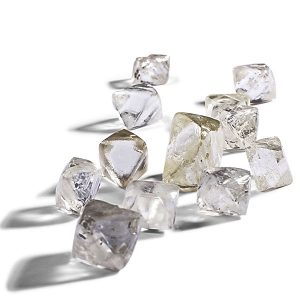
It’s become clear: Consumers want firm guarantees that their diamonds are not associated with bad things. So do governments. And the industry is—perhaps belatedly—stepping up its efforts to offer that. Transparency and tracking have suddenly become “in.”
As was discussed on the latest JCK podcast, the number of traceability seminars and initiatives at the JCK Las Vegas show this year was truly impressive, from the De Beers–originated Tracr to the new program to trace lab-growns.
“That is an area where there really is growing interest,” says Tom Moses, the Gemological Institute of America’s (GIA) executive vice president and chief research and laboratory officer. “It’s not just in our industry. You see that all the brand names want to know where all the leather in their goods comes from. It’s natural that people want to know where their diamond is from.”
As a result, GIA has retooled its mine-to-market program, which it now offers as country of origin reports.
“Maybe we were a little early and maybe we were a little too complicated with this a few years ago,” says Moses. “But we are reenergized with this. We are getting interest in it all the time.”
One particularly noteworthy development came from Russian diamond miner Alrosa, which announced a traceability initiative at the show.
Alrosa is in a unique spot here. It has a mine. It has a cutting factory. It doesn’t have to do a lot of work to track its production. No blockchain, scientific formulas, or other fancy footwork needed.
“We think that being able to track our stones is a competitive advantage,” says spokesperson Jenya Kozenko. “We think some consumers want this kind of guarantee.”
The diamonds will come with a “digital passport” that includes information about the diamond, such as where it came from and its mine of origin.
But will diamonds from Russia be a selling point? Given all the controversy about Russia’s interference in the 2016 election, couldn’t some see that as a negative?
“We believe that the diamond market is out of politics,” says Kozenko. “We see social responsibility, environmental responsibility, working conditions as our advantage. We can assure people their diamonds are natural and non-conflict.”
While Alrosa is offering these diamonds to jewelers, it will also sell them on its new site, diamonds.alrosa.ru. It has an initial offering of 2,000 diamonds on the site.
Kozenko admits that not all jewelers—ever sensitive about channel conflict—were happy to hear about a miner selling to the public.
But she says that most of the diamonds will be sold B2B, and that the wholesale and retail prices will be different. It is just launching the B2B platform now and hopes to have the retail platform ready later this year.
When you combine this with Tiffany’s sourcing announcement earlier this year, a clear pattern is emerging. For years, the industry has been taunted with headlines that asked consumers, “Do you know where your diamond comes from?” In most cases, they still don’t. But in a growing number of cases, they now will.
(Image courtesy of Alrosa)
Follow JCK on Instagram: @jckmagazineFollow JCK on Twitter: @jckmagazine
Follow JCK on Facebook: @jckmagazine